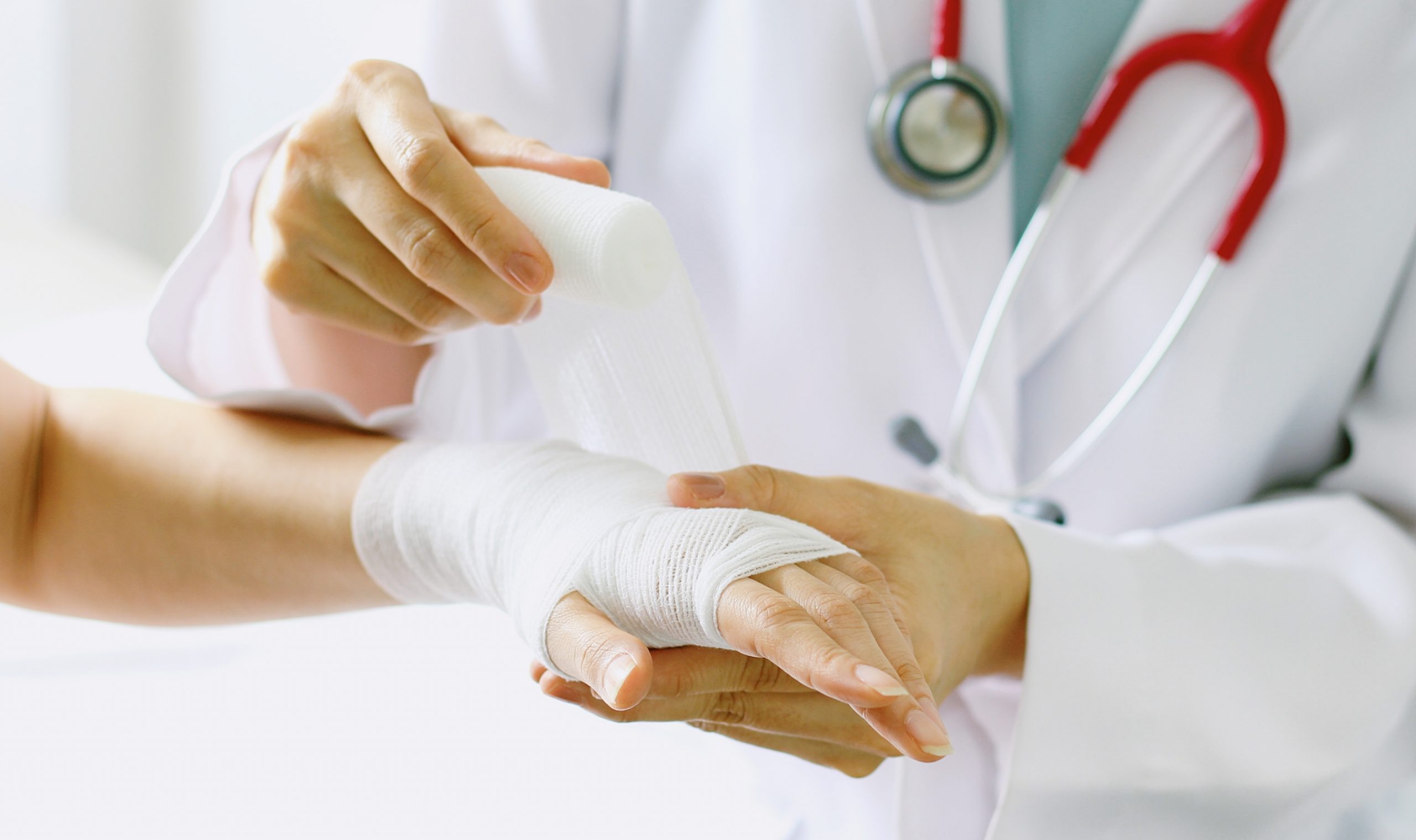The wound care market is expected to grow by 46 percent to 2030, from an estimated 2020 market value of $8,978.0 million to $14,190.5 million. A wound, big or small, requires immediate attention. The wound needs to be treated and dressed if it’s not a minor one. In order to achieve the best possible healing of a wound, dressings help to maintain the proper moisture balance. Sterilized pads or compresses are applied to wounds in an effort to promote healing and/or avoid future injury. Bandages are commonly used to keep dressings in place. However, dressings are intended to be in direct contact with the wound. First aid and nursing frequently call for the use of dressings.

Types of Wounds and Treatment Options
- Moisture retention, such as hydrocolloid, semi-permeable
- Slough-covered wounds, such as hydrocolloid and alginate, which retain moisture and absorb fluids,
- Avoid semi-occlusive dressings if you have an infected wound. If there is a lot of exudates, consider alginate or hydrocolloid.
- Film, tulle, fixation sheet, or dry can be used to clean grazes and abrasions.
- Soiled: dried or fluffy
- Bite wounds and puncture wounds—whether they are open or dry
- Sutured lacerations, whether open or dry, should be supported with paper tape after the sutures have been removed.
- For small burns, use fixative sheeting, medicated tulle, and film.
- Burns that necessitate admissions, such as those requiring plastic wrap or a medicated tulle swab, are labeled as such.
- Hydrocolloid, alginate, or foam for ulcers, PEG sites, or other chronic sores.
See Also: Immuno-oncology Clinical Trials Market Size, Share & Trends Analysis Report
Wound Care Supplies
- Fluid-repellent dressings, such as hydrocolloid, are used for a variety of conditions, such as burns, necrotic wounds, light-to-moderately draining injuries, pressure ulcers, and venous ulcers.
- Fluid-free wounds, necrotic wounds, wounds with a high risk of infection, donor sites, and wounds with a high risk of infection are some conditions for which hydrogel dressing can be used.
- Stage III or IV wounds, venous ulcers, packing injuries, and pressure ulcers may all benefit from the application of an alginate dressing.
- Use a collagen dressing if you’ve got long-standing wounds like persistent bedsores that won’t heal or if you’ve had surgery on a second-or third-degree burn or wound that covers a wide region.
- Using foam dressings for wounds of any severity is a great option, as well as for wounds that have unpleasant odors.
- With the use of transparent dressings, medical experts and caregivers can keep an eye on the progress of a wound’s healing process.
- Most commonly, cloth dressings are used to cover open wounds or regions of broken skin from infection. Abrasions, wounds, and areas of fragile skin can all be treated using these bandages.
The overall market demand for wound care will be boosted by an increase in hospital visits.
In 2020, the hospital market was estimated to be worth USD 3.8 billion. The segment’s growth will be accelerated by an increase in healthcare spending for better patient care and a rising number of treatment procedures performed in hospitals. Hospital-acquired pressure ulcers, in particular, are on the rise, which will lead to an increase in the demand for improved wound care.
Inherent Rewards for All Participants
3M, Coloplast, Hollister Incorporated, Medline Industries, Molnlycke, HARTMANN International, ConvaTec Group, MPM Medical, Smith and Nephew, Organogenesis, Integra LifeSciences Corporation, BSN Medical (Essity AB), Beiersdorf global, Lohmann & Rauscher, B. Braun, and others are all major players in the market.
The worldwide wound care market’s present and emerging trends and dynamics are thoroughly examined in this study in order to determine the most promising business possibilities.
Predicting the competitive situation in the worldwide advanced wound care industry is the primary goal of this study.
An in-depth look at the variables that are driving and limiting the growth of the advanced wound care industry is presented.
The wound care market is analyzed in terms of regions and countries.
Similar items are available from a number of global companies.
View Article: What Causes Stomach Ulcers and How To Treat Them?



